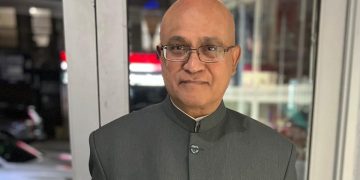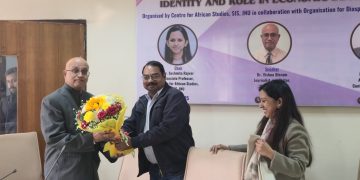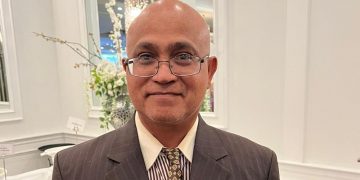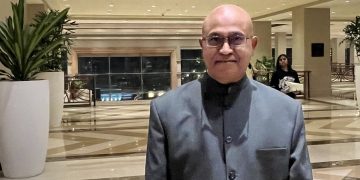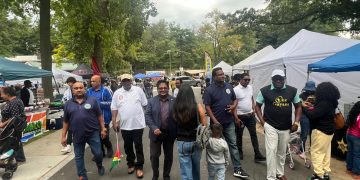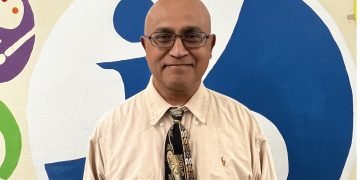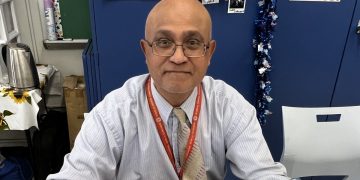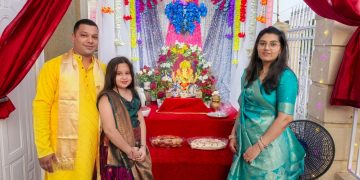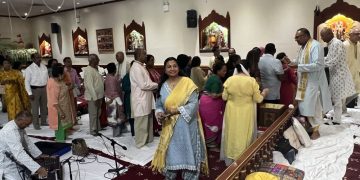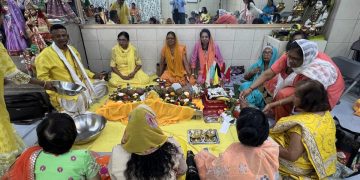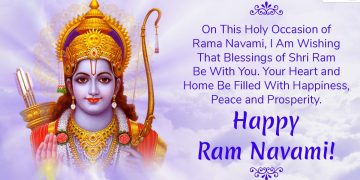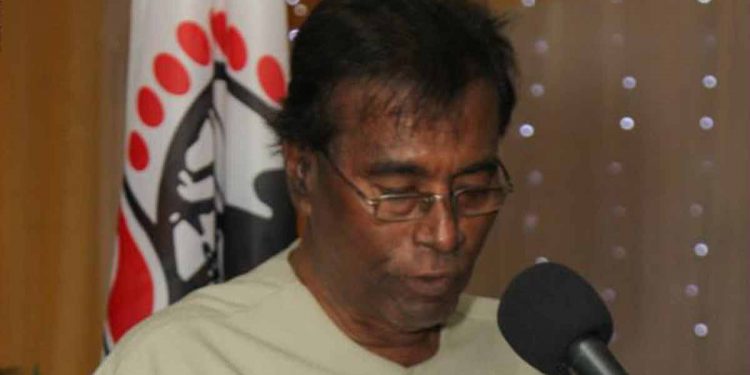Divali Nagar (City of Lights) is a yearly showcase of Indian culture in Trinidad and Tobago. The exhibition, which spans nine nights is presented by the National Council of Indian Culture (NCIC) at its headquarters, NCIC Nagar, located in the borough of Chaguanas. It is the only celebration of its type in any part of the world showcasing Indian culture for nine days in the celebration of a Hindu festival such as Divali. Even in India, such a festival does not exist.
Divali Nagar has helped thousands of Trinidad East Indians to rediscover their roots, to add new meaning to their understanding of Indian culture and their roots. This is also true of non-East Indians and foreign visitors who attend Divali Nagar each year. Divali Nagar has touched the hearts and minds of thousands who had dismissed Indian culture as backward and not part of Trinidad and Tobago’s culture. It has forced them to take a fresh look at Indian culture and to re-engineer a new dawn in their understanding of Indian culture and Hinduism in Trinidad and Tobago.
Divali Nagar has opened new doors to East Indians culture, arts and artifacts and has propelled many local artists to national and international fame. Several artists who were now operating in the international scene had their beginnings in Divali Nagar. Divali Nagar has placed Indian culture on a new footing in Trinidad and Tobago; it has placed it on the national agenda giving it a higher profile which it had not enjoyed in earlier days. Besides, Divali Nagar has given East Indians in Trinidad a sense of patriotism, a sense of self-esteem and a psychological boost in placing Indian culture on par with other cultural strands in the country. It has given East Indians in Trinidad and Tobago a sense of nationalism and a sense of belongingness to their mother country, Trinidad and Tobago. The NCIC and Divali Nagar, more than any other organization or event, have placed Indian culture on par with other cultural strands in the country and have made it an integral part of the culture of Trinidad and Tobago. In doing so, it has helped to build and construct a new identity for East Indians in Trinidad and Tobago.
Divali Nagar (and by extension the NCIC) has created an impact not only in Trinidad but in the Indian Diaspora and India as well.
The NCIC is the largest organization of its type in the Western Hemisphere and many groups and individuals in the Indian Diaspora countries look to NCIC for leadership. Following the tremendous success of Divali Nagar and the international recognition it received from the Caribbean and other countries, the NCIC was approached by lovers of Indian culture in the Caribbean and North America to introduce Divali Nagar to revive and propagate Indian culture in those areas. The NCIC considered the proposal and decided to support the propagation of an expansion of Indian cultural traditions in countries such as Guadeloupe, Martinique, Grenada, St. Vincent and Lucia among other countries in the Caribbean. Also, this outreach effort has spread to the USA, Canada, Mauritius, Belize and Holland.
Most of the countries in the Caribbean where East Indians live as a result of the Indian indentureship program experienced a loss of their Indian cultural roots. By the 1980s, East Indians living in Guadeloupe and Jamaica had turned to Trinidad for support in the rehabilitation of their Indian cultural roots. Several cultural missions from Trinidad went to other Caribbean countries in support of the initiative. For example, in Caribbean countries such as Jamaica, St. Lucia, St. Vincent, Grenada and Guadeloupe the NCIC has become the leading organization in assisting descendants of the Indian indentured immigrants in those countries in their search for their ancestral roots, culture, and identity.
The NCIC sees this as part of its mandate. In strengthening the Indian Diaspora and East Indian identity in the Indian Diaspora, the NCIC is also strengthening itself and Divali Nagar. In some countries where Christianity is the dominant religion, the NCIC has not attempted to interfere with the religious nature of the people, but has merely sought to instill in them a sense of identity through the search for their roots using culture as the main vehicle.
Kanhai Kangal noted, “The NCIC’s foray into the Diaspora countries has helped East Indians in those countries discover their lost roots in trying to reclaim their lost heritage. There is an urgent cry and need among the people of these Diaspora countries to learn more about themselves, about their culture, about their roots and while they are mostly Christians, their religion has not prevented them from trying to find their ancestral roots. In other words, being a Christian does not prevent one from being involved in Indian culture or finding their Indian ancestral roots.”
Whenever the NCIC participates in an outreach program, the initiative is usually taken by the country involved in the activity. For example, when the NCIC visited St. Lucia recently with a contingent of sixteen artists, the initiative came because of an invitation by a group of persons in St. Lucia.
Divali Nagar has spawned several regional and international Divali Nagar celebrations in places such as New York, Miami, Canada, Holland, Mauritius, Surinam Guyana and Jamaica.
The NCIC and Divali Nagar have always sought to expand their horizons both locally and internationally. Over the years, the organization has sponsored teaching and learning programs to several Caribbean countries such as Martinique, Guadalupe, Grenada, Jamaica and St. Vincent and the Grenadines.
The formal outreach program began in 1988 when the vice president of the NCIC, Dr. Deokienanan Sharma led a cultural delegation to Guadeloupe and Martinique to assist with the revival of Indian culture in those French colonies. Other members of the delegation were
Ballyram Kuarsingh, Bob Ramroop, Dhanraj Suinarinesingh,and Rustom Hussein. A group of top local performers accompanied the delegation and among them were Anand Yankarran, Polly Sookraj, the Malick Krishna Soogrim Tassa group and other artists.
In. 1989 the East Indians in Guadeloupe wanted to celebrate Diwali and sought the support of the NCIC once more. The NCIC donated several boxes of deeyas, coconut oil and wicks to assist with the celebration of Divali in that country.
A few years later, in the early 1990s, Deokinanan Sharma and Ramroop again visited Guadeloupe with a cultural contingent to participate in the 150th anniversary of the arrival of Indian indentured immigrants to that country. Sharma addressed the gathering bringing greetings on behalf of the NCIC. Soon after that, the NCIC was again invited to send the pundit to Martinique to conduct the first Hindu wedding ceremony on that island. The NCIC allocated that task to Pundit Poornima, a member of the NCIC.
Over the years the NCIC has consistently supported various celebrations in other Diaspora countries. In 1998 the then vice president of the NCIC, Deokinanan Sharma handed Kanhai Kangal, an executive member of the NCIC, a letter he had received from Indians in St. Vincent asking for assistance to revive Indian culture in that country. East Indians there had just founded an organization called the East Indian Heritage Foundation of St. Vincent and the Grenadines and expressed an interest to the NCIC in learning more about their cultural roots. The leaders of the organization at the time were Janice Dean and Elmo Gaines. Kangal contacted the leadership of the organization and arranged for an NCIC contingent to visit the country to ascertain what kind of help the NCIC could provide. The fact-finding mission was very fruitful and some months later Kangal led a group of musicians, singers and dancers from Trinidad to St. Vincent to begin the process of assisting East Indians of that country in rediscovering their ancestral roots. Rajin Seemungal (a local music tutor) and a dancer spent a week teaching songs, music, dances and various Indian crafts to the people. At the end of the one-week workshop, the students were able to put on a cultural program for St. Vincentians. Amazingly, the organization charged a nominal fee of $10 for attendance and the place was sold out.
Each year since then the NCIC and the East Indian Heritage and Foundation Organization of St. Vincent have collaborated in several ways including the celebration of Indian Arrival Day and other teaching and learning programs. The Indian Arrival Day celebration in St. Vincent is held on June 2 each year and East Indians in that country come together to celebrate the day with Indian songs, music and dances, and in some cases a re-enactment of the arrival of East Indians in that country.
Kangal indicated that he had been to Guadalupe with Bob Ramroop, to Martinique with Kumar Mahabir and to Jamaica, Belize and Suriname with Surujdeo Mangaroo on several cultural outreach missions to those countries through the NCIC initiative.
In August 2013 Kangal led a group of local singers, musicians and dancers to St. Lucia. This outreach event was a follow-up to a specific request from East Indians in Lucia who were desirous of discovering their East Indian ancestral roots. Some sixteen persons including Purushottam Singh was part of that contingent representing the NCIC on that very successful cultural outreach mission to St. Lucia.
Many East Indians in the smaller West Indian territories are Christians. As such, their involvement in the discovery of their roots is limited to Indian arts and crafts and, nonreligious songs, music and dances. Because Divali Nagar has become an international event and in some cases has overshadowed the name of the NCIC, many people refer to the activities of the NCIC as Divali Nagar. Largely, the term Divali Nagar has become synonymous with NCIC. However many of the activities in Grenada, St. Vincent and the Grenadines, St. Lucia, Jamaica and other Caribbean countries center on Indian Arrival Day celebrations and refer to the activities as the “Nagar”.
In addition to the activities of the NCIC in some of Indian Diaspora countries, it is also important to note that the Indian High Commission has also become involved in some of those activities in some Caribbean countries and has offered scholarships to persons of East Indian descent to study Indian music, songs, dance and Hindi in India. Therefore, while the NCIC pioneered the revival of East Indian roots in those countries the Indian High Commission later joined in those efforts.
In countries such as Guadalupe, Grenada and Jamaica where there are some Hindus, Sharma noted “there have been requests to build temples and to promote Hinduism and the NCIC has been at the forefront of assisting these Diaspora Indians in their journey of discovering roots.”
Most visits to Diaspora countries are undertaken at no cost to the NCIC. The executive members of the NCIC who go on those visits purchase their own tickets while sponsors are sought for tickets for members of the cultural contingent. The hosts in the relevant countries assume responsibility for hospitality including accommodation, meals, transport, sightseeing and other aspects of the visits to the country.
The teaching and learning component of the outreach program is a key aspect of the outreach effort. When local artistes visit those countries as part of the outreach program they give live performances to the locals and teach their artistic skills to the locals so that when they leave the country, they would have left something behind. The appreciation from the Diaspora Indians, particularly in the Caribbean countries is overwhelming as seen through the eyes of Kangal “when our local artistes perform in those countries I have heard comments such as ‘ we only see such performances on TV; we have to travel abroad to see such performances; we are very happy to have artists of the caliber that we see here perform for us. In addition, when those artists teach the local people the art forms, at the end of a weeklong workshop, they are able to give credible performances to their local people and they are highly praised for such
endeavors.” Sharma added, “As part of the outreach programs to the Diaspora countries the NCIC has also donated instruments, dance costumes and other materials to relevant Diaspora groups and has sent tutors as part of follow-up events to assist in the propagation of Indian culture in those Diaspora countries.”
One of the persons who has been at the forefront of the NCIC/Divali Nagar’s outreach program is Surujdeo Mangaroo. He noted that while the program was ongoing when he took over as the program coordinator, he expanded it beyond the Caribbean targeting Indians in the Global Diaspora. This initiative achieved great success spreading Divali Nagar and the NCIC to every part of the Indian Diaspora. “By that time several Caribbean islands such as Guadalupe, Jamaica, Martinique, St. Vincent, St. Lucia, Grenada had already been on board. I further expanded the linkages to Surinam and Guyana. I Subsequently expanded the Diwali Nagar to the USA [Florida] with Neil Persad as our main organizer there and since then every year we have sent local artists to participate in the Diwali Nagar celebrations. Unlike ours, theirs was limited to a three-night Diwali celebration.”
As the years went by and the cultural spread of the NCIC in the Caribbean began to bear fruits because of the teaching and learning content of the program, interest in Diwali Nagar from those countries grew. In an effort to be all-inclusive, the NCIC started a Caribbean night with performances by Caribbean artists. That was a night dedicated to promoting the work of Indian artists from the Indian Diaspora in the Caribbean and it was a very successful initiative as it helped to showcase surviving aspects of Indian culture in other Caribbean islands where Indian indentured immigrants went to work. Mangaroo added “Some aspects of that Indian culture we have lost in Trinidad. For example, from Jamaica, there was the Ghat-Gora dance(horse stance). With the arrival of the Jamaican contingent, this date on in the country for 70 days after Diwali Nagar ended and give performances throughout Trinidad and Tobago and they were very well received wherever they performed. Artists from Guyana, Guadeloupe, Surinam and others also participated in parts of the outreach programs and the two were always accorded the highest decorum and reception wherever they performed.”
Mangaroo has been performing yeoman service in accommodating artists from the Indian Diaspora for the last 20 years at his own cost. There have been groups ranging from 2 to 12 persons visiting NCIC which full accommodation from him and his family over the years. He noted that his family has been accommodating/hosting NCIC foreign artists at their home for many years. One can well imagine what it takes to host a contingent of eleven people at a private residence where the family has to prepare meals, provide transport, sightseeing and other amenities to ensure that the visitors enjoy Trini hospitality at its finest. He further noted that when he takes local artists to perform or do workshops in Caribbean countries, he does so at personal cost.” It does not cost the NCIC anything at all. This is part of my contribution to the NCIC and my contribution to the development and spread of Indian culture in the Caribbean. Through our efforts in the NCIC, we have been able to assist thousands of Caribbean Diaspora Indians in finding their roots.”. Within recent years Mangaroo has been at the helm in taking local artists at his own cost to perform in Diwali Nagar and Indian Arrival events in Belize, Grenada, St. Vincent, Suriname, Guyana and other territories.
The Caribbean night at Diwali Nagar ran for several years and then that was merged into three different competitions: youth Champ in Concert, Divali Nagar Dance Competition and The Diwali Queen Competition in which Caribbean and other representatives were invited to participate. This proved to be a very successful reconstruction of the Caribbean Night as it allowed Indian Diaspora artists to showcase their skills in the various categories in a very competitive mode. And some of the Diaspora artists were winners in those competitions so that indicates the quality of presentations from those foreign.
Mangaroo added “ in addition to the artists who came from the Caribbean and North America there were large numbers of visitors from Holland, London, Canada and even Mauritius who visited the Diwali Nagar. Diwali Nagar has the potential to become a huge tourism product for Trinidad and Tobago but needs additional support from government and governmental agencies to reach that goal.
Artistes from the USA, Canada, Holland, India, London, Suriname, Guyana, Jamaica and Belize have participated in Diwali Nagar within recent years. One of the regulars who have been with us in Diwali Nagar every year for the last decade has been Dr. Winston Tolan from Jamaica who attends and brings a small contingent of artists from his country. He is also a singer and performs for the audience.”
Some of the artists who have participated in the outreach programs and have taught classes and conducted workshops in the Caribbean Diaspora countries are Sandra Sookdeo, Ashmini Ramlochan, Vijay Ramkissoon and Rajin Seemungal. Sharma noted, “ the NCIC is satisfied that it has created a very unique experience under this outreach program where it sent teachers to Diaspora countries to teach aspects of Indian culture.”Among those from the NCIC’s executive who have been part of the outreach programs, the following names stand out: Bob Ramroop, Purushottam Singh, Kanhai Kangal and Surujdeo Mangaroo. Within recent years Surujdeo Mangaroo has been at the forefront of this ongoing effort on behalf of the NCIC and has expended thousands of dollars of personal funds in this exercise.
Diwali Nagar and the NCIC have succeeded tremendously in exporting aspects of our Indian culture to the Caribbean and other Diaspora countries and those countries have reciprocated by participating in Diwali Nagar and other NCIC events. This year due to the Covid 19 pandemic the NCIC has organized a virtual 9-day Diwali Nagar which would bring back memories of past Diwali Nagars.













